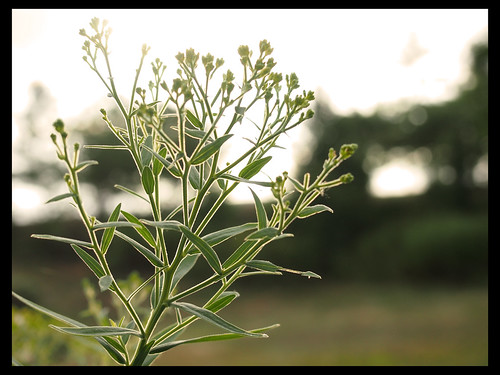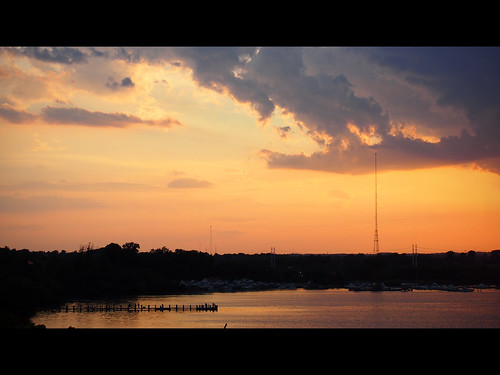Work ran a tad late last night. It is my tradition to try and be in no later than 6:30am or so, early enough to where an 8 hour day at the office won't cut too deeply into my evening time. Yesterday the total hours clocked was 11. Normally this would only mildly irritate me ritualistic habits during the week, but yesterday was no normal day. Oh no, yesterday there was a gem awaiting me in a little UPS box. It called my name from miles away, demanded exclusivity of my attention, beckoned me to come and coddle it in my hands.
Okay, so clearly it did none of that REALLY, but nonetheless, an extra few hours of anticipation really made my giddiness skyrocket for when I came home to unbox my brand new and utterly lovely E-P3.
First impression upon getting the awful cardboard and peanut packaging out of the way... complete surprise. It's one thing to read about a camera body online, hear how its construction is methodically dissected and its size/handling relate to the average man-hands, but having the body physically in front of me and the tactile nature of my introduction to it had me very much taken aback. My GF1 was solid, but clearly built of flexible plastic. Same goes for my old D40x. Both of which were fairly light cameras, not nearly so weighty as to really be noticeable over the shoulder unless mounted with a particularly large lens. Completely different story with the E-P3. I'd read about its solid metal construction, but didn't grasp what kind of confidence that inspires when held in the hand. I've had metal film SLR cameras with faux leather gripping but nothing that was quite as elegantly incorporated as in this little digital camera. And it was very little compared to my expectations. Whereas my mental concept of the camera had it being significantly larger than the GF1 that preceded it, I was shocked to find the camera in my hands occupy nearly the exact same amount of space. It was small like the GF1 but deeper to the point at which it was recognizably easier to hold, especially in the two-handed manner that provides the steadiest shots (I never knew where to cradle the GF1 with my second hand, an issue not too dissimilar than that which I have with the XZ-1 compact). I could ramble on and on and on, but the bottom line is that the body alone left the impression that I had invested in a far more professionally minded camera than I ever have before, both in terms of construction and meticulous attention to the most important aspect of any photographic instrument, ergonomics.
The kit lens held just as much surprise, though not all necessarily positive. The GF1's kit zoom, the 14-45mm f/3.5-5.6, felt extremely solid in the hands. It was on the larger side, but the nature of its construction excused that bloated presence on the front of the camera. Olympus' kit zoom, the 14-42mm f/3.5-5.6 Mk.II, was a far more diminutive piece. From a size viewpoint, when collapsed, it felt like a couple of 14mm f/2.5 pancakes on top of one another, just as thin around and only maybe as deep as 2 stacked on top of one another. I rather like the smaller presence it has on the front of the camera compared to the old 14-45mm, especially without its hood to tempt an even more gaudy appearance. Its construction didn't feel quite as solid, however, with a much more coated plastic feel than the 14-45mm. With the impression left by the all-metal body, the kit lens felt a little disappointing in this respect, but it more than made up for it in the feel of the action of the zoom and focus ring. Panasonic's lenses suffer the same drawback as Nikon's zooms, the rotation of the barrel proving horribly sticky and difficult to dial in with minute adjustments both with the zoom ring and the focus ring. Here Olympus managed to impress me to high degrees - the zoom and focus rings rotated with the kind of buttery smoothness of higher end Zeiss or Voitlander glass, allowing me to dial in a focal length or fine tune the focus directly rather than the routine I'd become accustomed too of snapping too far, dialing back, then trying to dial forward again into the sweet spot. For a kit zoom it is a joy to use.
By the time I'd unpackaged and assembled the camera the sun was setting in front of a dramatic, stormy sky. Perfect conditions under which to test out such an aesthetically appealing tool. I set my tablet to stream the inspirational sounds of various Post-Rock artists, popped in the earbuds and began a little photo walk. Most of the camera's settings I kept as default as possible, adjusting one thing at a time as I saw necessary. The interface was very intuitive, not too dissimilar from that of the XZ-1 but with a bit more depth available for greater image adjustment in-camera. Immediately I was able to find and adjust image options with limited hassle, the greatest hick-up being the difference in when the scroll wheel was utilized in comparison to the 4-way directional buttons underneath. For the walk I kept the camera in auto ISO (which surprisingly took liberties all the way to ISO 1600, something I will have to change in the future as that is not an ISO I am comfortable with using), used the iEnhance color mode which very intelligently pumped specific depths of color while leaving other, less appealing ones alone, left it in Program shooting mode and stuck with fine JPG files. Although I failed to reduce the noise reduction algorithm's intensity (which is to say turn NR off completely) and didn't notice how broad the spectrum of auto ISO was (just a tad higher than I was comfortable with from an image quality standpoint), the resultant images did not disappoint.
Out of camera JPGs were produced masterfully, with saturation, sharpness and contrast exactly where I would have rendered them in post. For deeper color shots they may very well have even be handled better than what I could have produced as my ability to work with color in RAW is lacking (mostly due to uncertainty and simple lack of knowledge). The OLED screen of the E-P3 is marvelous, showing images in amazing clarity and perfectly calibrated color, contrast and gamma, the way the images would look if printed. In fact, the screen was so good that it made my horribly uncalibrated laptop screen feel utterly inadequate for any kind of image review at all. This isn't a foreign concept to me - when I had a Canon G10 in my bag the screen on back of the camera was similarly stunning, but it tended toward blowing out the image review with over-saturation and contrast compared to how the printed image would ultimately look and especially how the image appeared on a computer monitor. In this case, however, the camera's screen is legitimately better at presenting the image to the point where it's almost difficult to know whether my laptop's uncalibrated screen can be trusted as all in any even minor post-work. I tried a few small JPG edits for my crop from the photo walk but had an issue with channel clipping, indicating to me that the camera itself was rendering the JPGs at the maximum limits of their tolerance already meaning they needed no post-work done upon them at all. It was odd. I've never dealt with any image, JPG or RAW, that didn't need or benefit from at least a small degree of post. JPG shooting with the E-P3 runs the risk of changing my process completely by limiting the computer to nothing more than an elaborate cropping, alignment and framing tool. And that's certainly not a bad thing.
I have yet to push the limits and test the RAW capabilities of the camera but find myself much less eager to do so. My interest is far more focused in perfecting the manual adjustments available for JPG rendering. It's been a very long time since I've worked with any camera able to produce such lovely images out-of-camera and I'm more than eager to lock in the settings that are most appropriate for stills and people shooting respectively. Before I feel comfortable with any attempt at RAW editing I would certainly need to calibrate my laptop screen as well, preferably to match the calibration of the camera's OLED screen for consistency across the board. Somehow, I suspect RAW simply won't see much use anymore.
Given the praiseworthy first impressions this camera has left me with, my anticipation for the future additions I have planned for the system have grown ten-fold. The VF-2 viewfinder and 85mm f/1.8 lens are especially high on the list of anticipated items. Having tested the Panasonic 14mm f/2.5 on the E-P3, the 12mm f/2.0 has somewhat fallen by the wayside as something that would certainly be nice to have but isn't nearly as crucial as originally thought as the E-P3 accommodates that lens surprisingly well (distortion is relatively high, but shot in RAW the distortion is corrected automatically in ACR). Some manner of normal-to-long fast prime is definitely an eager addition to the bag, though. Portraits will be able to sing with this tool at my disposal.
In the months to come I finally feel a sense of jollity at the future of my pursuit of photography. Limited to the XZ-1 I felt encumbered and weighed down by both poor perception and inability to adapt to different shooting conditions. This E-P3, however, re-opens doors that were never entirely shut, simply closed to the point of only a crack being left between door and frame. I never fell off the horse, and my acquisition of this new camera is an empowering testament to my sense of dedication to the art of photography. Amazing I ever doubted it to begin with.
Subscribe to:
Post Comments (Atom)





YESSSSSS
ReplyDelete